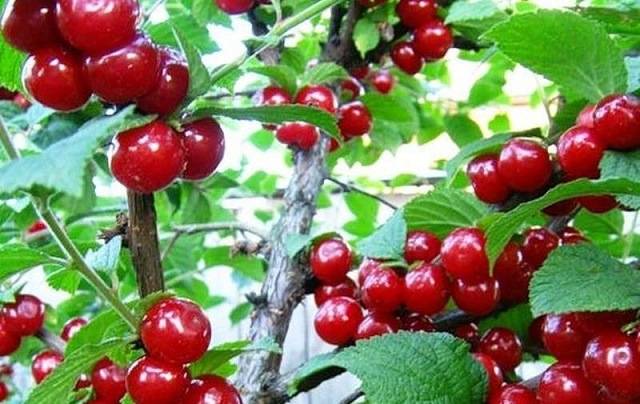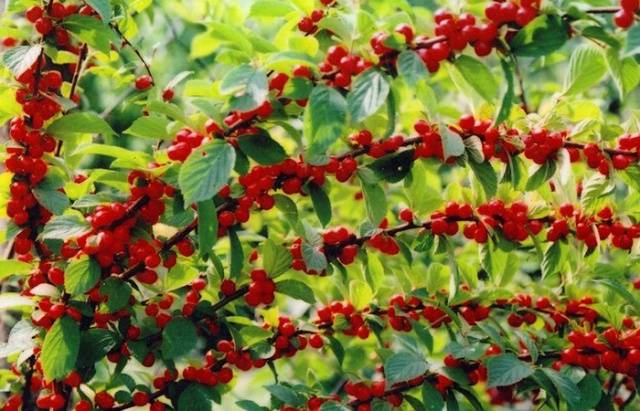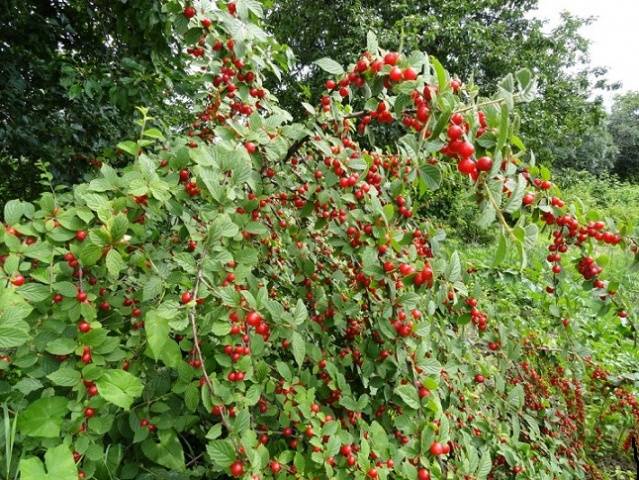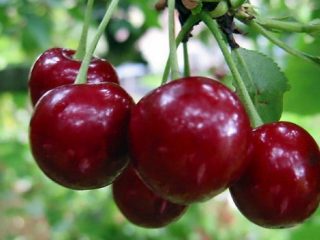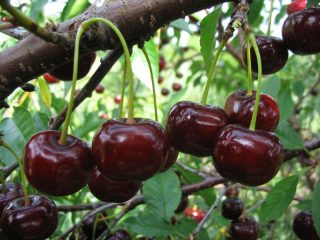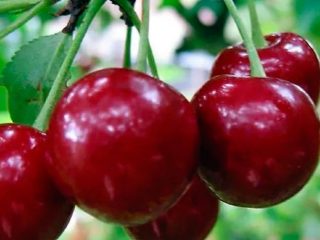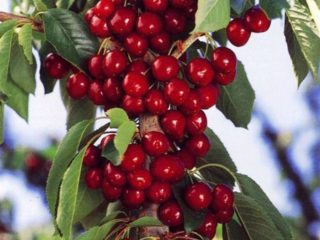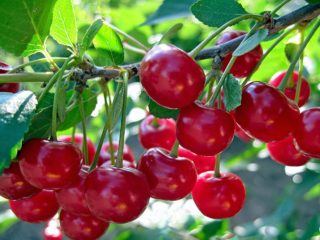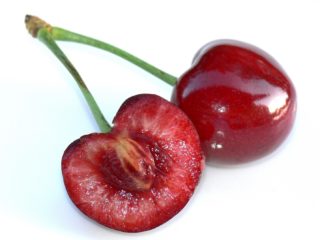Content
Felt cherry, or, more precisely, its wild form, grows in Mongolia, Korea and China. In the middle of the last century, the cultivated shrub plant became popular in Europe and North America. Gradually, the popularity of felt cherries reached Russia. According to some information, our famous botanist I.V. Michurin brought wild Chinese cherry seedlings (this is also the name of this plant) to Russia and, after carrying out some selection work, received the first variety of large-fruited felt cherry. His work was continued by enthusiastic successors. And since then they have developed many new varieties of this crop, one of which is Ogonyok.
History of selection
In 1965, at the Far Eastern Research Institute of Agriculture of the USSR, a group of agronomists under the leadership of G. A. Kuzmin carried out work on developing a new variety of felt cherry. From the seeds of the already known variety Early Pink, a completely new variety of shrub was obtained.Its berries were larger in size and rich in color. Perhaps this is why the variety was named Ogonyok.
Description of culture
Felt cherry variety Ogonyok is a perennial shrub or subshrub plant. The fruiting period begins 2–3 years after planting. It lasts from 10 to 15 years, but with timely rejuvenation, constant care and maintenance, the crop can bear fruit for up to 20 years or longer.
The bush produces tasty and juicy berries, which are rated 4.5 points (using a five-point system) in terms of taste. It can also serve as a decorative element in the garden landscape, decorating it in the spring with its abundant flowering, and in the summer with a bright red decoration of beaded berries.
The berries of the felt cherry Ogonyok are not large in size, but their number on the bush is amazing. All branches are strewn with fruits like sea buckthorn. Like sea buckthorn, felt cherry Ogonyok is not a self-pollinating plant. To set fruit, the felt cherry Ogonyok requires pollinators. Therefore, the felt cherry Ogonyok should be planted next to shrubs and trees such as plum, apricot, and common cherry.
The unpretentiousness of the Ogonyok variety allows you to grow this shrub in gardens and areas where climatic conditions are harsh and unpredictable: in Siberia, the Urals, the Moscow region and the Leningrad region. One of the important conditions when growing felt cherries is the correct planting site. It should be well lit by the sun. Acidified, low-lying and swampy areas must be prepared in advance (1-2 years in advance) for planting seedlings: drain, reduce the acidity of the soil, add the necessary additives (dolomite, lime, sand) and fertilizers.With proper implementation of agricultural activities, the fruits of the plant will be larger, sweeter, and the yield will increase.
Characteristics
The characteristics of felt cherry Ogonyok are displayed in a small table below.
Basic indicators | Minimum values | Maximum values |
Shrub height | 1.8 meters | 2.5 meters |
Crown volume around the circumference | 1.6 meters | 1.8 meters |
Root depth | 0.25 meters | 0.35 meters |
Fruit weight | 2.5 g | 4.0 g |
Bone (non-lagging) | 1.6 g | 1.6 g |
Chemical composition of fruits: |
|
|
- dry matter (vitamin C) |
| 14,1% |
- sugars (glucose, fructose) |
| 11,8% |
- acids (malic, citric) |
| 1,0% |
- tannins and pectin |
| 0,3% |
Drought resistance, winter hardiness
During periods when there is not enough natural moisture, cherries need to be watered, especially during the formation and ripening of berries. Otherwise, the fruits dry out and wrinkle due to lack of moisture. The plant tolerates winter cold down to -25°C and its buds do not freeze. At lower temperatures and prolonged periods of frost, an insulating shelter should be prepared in the form of panels made of slate or other materials.
Pollination, flowering period and ripening time
Felt cherry Ogonyok is a self-sterile crop. For normal fruiting, it requires the proximity of plants that bloom at the same time as it. And insects, carrying pollen, pollinate the flowers of the bush. Such garden plants include different varieties of apricot, plum, ordinary cherry, peach, and cherry plum. The flowering period of cherries depends on the region of growth. The warmer the climate, the earlier flowering will begin. In the middle zone, this period lasts from late May to mid-June.Cherry berries of the Ogonyok variety reach full maturity already in July, fruiting lasts until the end of August.
The fruits do not fall off, can mummify and stay on the branches all winter.
Productivity
There are always a lot of berries on cherry bushes, but their total mass when calculating the harvest is significantly lower in comparison with the harvest of ordinary cherries. The average harvest of felt cherry fruit can range from 8 to 12 kg per bush per season. The record harvest was 15 kg per plant.
Area of application of berries
Cherries of the Ogonyok variety are berries for fresh consumption, as a dessert or a children's treat. But in large areas it is grown for making juices, wines and mixes with other berries and fruit crops. Gardeners who have been growing similar bushes on their plots for a long time prepare compotes and jam with seeds from the berries. These preparations are not stored for long, no more than 2-3 months.
During their removal, much of the juice and soft flesh is lost. It is not recommended to store preparations with seeds for a long time due to the accumulation of hydrocyanic acid in them, which turns into poison over time.
Resistance to diseases and pests
Ogonyok cherry is resistant to some fungal diseases - coccomycosis and moniliosis. In the absence of preventive treatments in the garden, cherries can be affected by clasterosporiasis and pocket disease. The main pests are plum aphids, codling moths and mites.
Advantages and disadvantages
The undeniable advantages of the Ogonyok variety:
- compactness and low growth of the bush, which is convenient for care and harvesting;
- excellent berry taste;
- decorativeness of the plant.
The disadvantage is the low level of transportability and short shelf life.
Landing Features
Felt cherry Ogonyok is very unpretentious. Planting and caring for the Ogonyok felt cherry requires adherence to certain rules. Seedlings of the variety can be purchased in nurseries or ordered through online stores.
Recommended timing
It is recommended to plant seedlings in the spring, at the end of March or in April, depending on weather conditions. The air temperature must be at least +10°C.
Choosing a suitable location
Cherry Ogonyok prefers well-lit areas that are not blown by winds and protected from drafts. The composition of the soil is not a priority, but on acidic, infertile lands, bushes grow slowly and yields decrease.
What crops can and cannot be planted next to cherries?
You can plant next to cherries: cherries, spicy perennial herbs, low-growing flower crops, sloe, plum, cherry plum.
Do not plant near cherries:
- apple trees, pear trees, quince trees, low and dense fruit bushes;
- garden nightshade crops (tomatoes, peppers, eggplants).
Selection and preparation of planting material
Cherry seedlings can be purchased at special nurseries or grown independently. You can learn about some methods of propagating felt cherries of the Ogonyok variety by watching the video.
A feature that you need to pay attention to when buying a seedling is the characteristic layering of the bark in the form of uneven scales (the bark of a regular cherry is even and smooth).
Landing algorithm
The seedlings are planted in the spring in prepared areas. Immediately before landing:
- the ground is loosened and holes are dug with a depth and diameter of 50 cm;
- fill the holes 1/3 with compost;
- apply mineral fertilizers for fruit and berry crops;
- water, and then place the roots of the seedling in the hole, straightening the shoots;
- covered with fertile soil and compacted.
In the next 2 years, the seedling will not require feeding. They begin to feed him in the third year of life.
Subsequent care of the crop
Starting from the third year of life, bushes require annual sanitary pruning, fertilizing and preventive treatment against diseases and harmful insects. For spraying for these purposes, solutions of copper and iron sulfate and Bordeaux solution are used.
The Ogonyok variety is a winter-hardy shrub; it does not require additional shelter for the winter.
Diseases and pests, methods of control and prevention
Diseases and garden pests do not bypass felt cherries. Therefore, the most effective way to protect against them is to preventively spray the bushes at least 3 times per season. Breaks between treatments should be from 7 to 12 days.
Conclusion
Gardeners who prefer to grow Ogonyok felt cherries receive double benefits: a tasty berry and a decorative addition to the garden. And it is also worth noting the ease of caring for the crop, its winter hardiness, which is of great importance in regions with cold climatic conditions.
